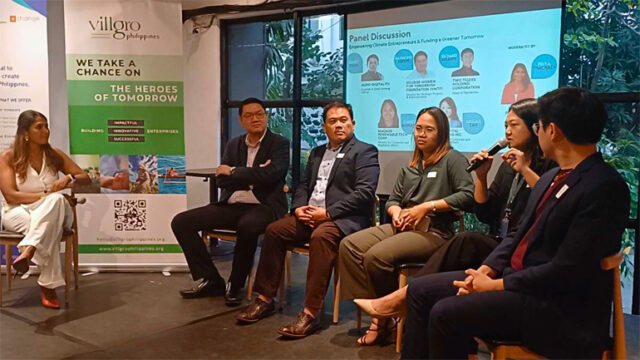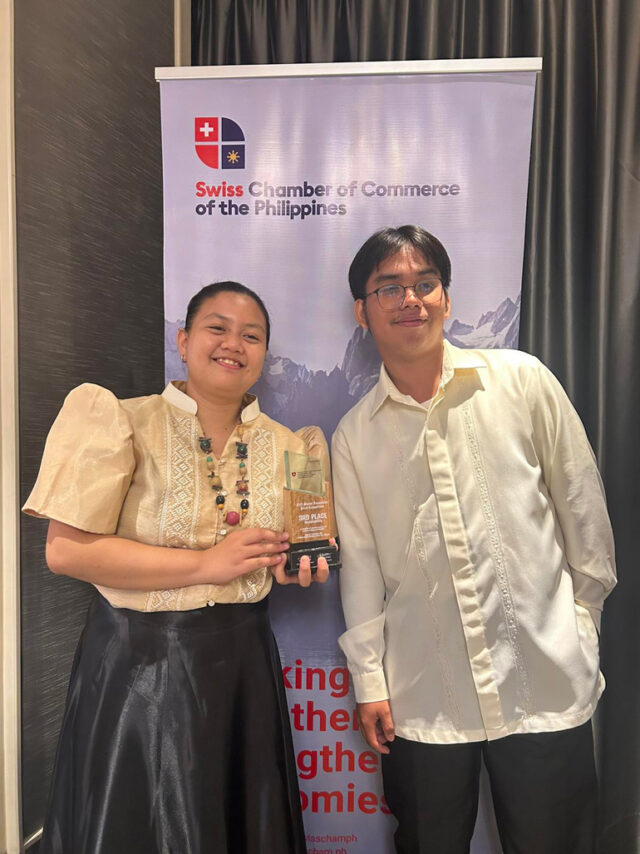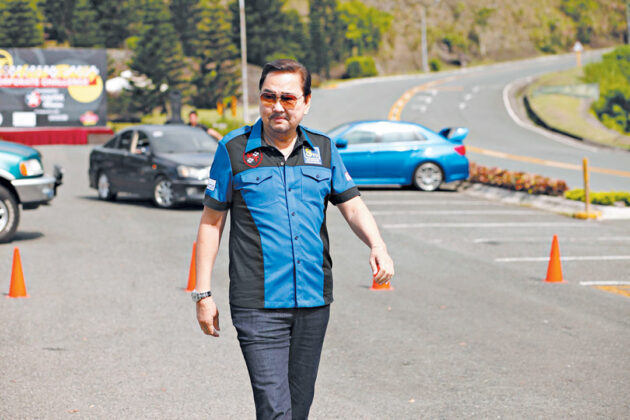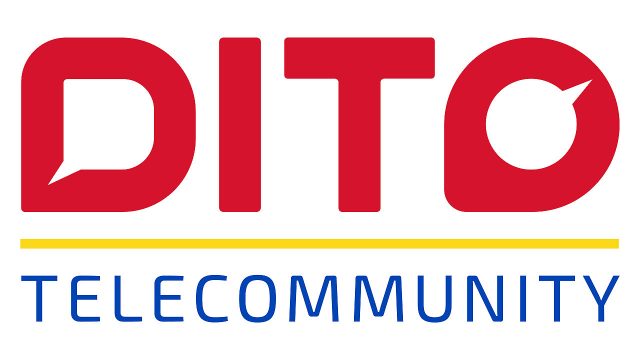By Luisa Maria Jacinta C. Jocson, Reporter
NEWLY APPOINTED Finance chief Ralph G. Recto must focus on tax reforms that will address issues preventing efficient tax collection and compliance, as well as consider more progressive taxes to boost revenues, analysts and business groups said.
“Reducing the burden of compliance with tax laws is a major concern for investors, and we look forward to the Department of Finance (DoF) and its attached agencies continuing to engage the private sector to resolve challenges related to this,” Ebb Hinchliffe, American Chamber of Commerce of the Philippines, Inc. executive director, said in a Viber message.
Enrico P. Villanueva, senior lecturer of economics at the University of the Philippines Los Baños said in a Facebook Messenger chat that he hopes Mr. Recto will focus on tax collection efficiency and reduction of corruption.
Mr. Recto on Friday took his oath as Finance secretary, replacing Benjamin E. Diokno, who is returning to the central bank as a Monetary Board member.
The former senator and Batangas congressman said that he will be continuing the strategies under the Philippine Development Plan and the Medium-Term Fiscal Framework. “There is a plan, there is a roadmap that essentially we will continue,” he added.
Mr. Recto also committed to reaching the tax collection targets this year. The Bureau of Internal Revenue is expected to raise P3.05 trillion and the Bureau of Customs is seen to collect P1 trillion, based on the Budget of Expenditures and Sources of Financing.
“So, every night, when I wake up in the morning, we should have collected more or less P20 billion to fund all the needs of our people and the requirements of government, and to make sure that money is spent wisely because we have to stretch every peso, including acting faster on investment,” he said.
In a statement on Friday, Mr. Recto said he will push for the immediate passage of key tax reforms endorsed by the President as priority measures in Congress.
“I agree that we need funds to finance growth and our people’s growing needs and install a system that promotes fair and fast tax administration. These measures will not only finance development but will reduce the deficit and our dependence on debt,” he said.
Filomeno S. Sta. Ana III, coordinator of Action for Economic Reforms, said that Mr. Recto must be able to push for reforms as soon as possible, ideally within the first half of Mr. Marcos’ term.
Mr. Sta Ana said that pushing for reforms later is “dangerous” as legislators will become more “sensitive to politicking and pressure from lobbying by vested interests that dangle campaign financing to politicians.”
“The incoming Finance secretary has to pursue the reforms that the DoF has endorsed, but which have been sidelined or derailed. Where Mr. Diokno failed, the new Finance secretary must succeed. Whether the new secretary will have the courage to pursue the tax reforms remains to be seen,” he said.
“It is a big challenge, given that the window to have the reforms legislated is closing amid the politicking and infighting as we get closer to the midterm election cycle,” he added.
WEALTH TAX?
Sonny A. Africa, executive director of think tank Ibon Foundation, said he hopes that Mr. Recto will be open to moderating “regressive consumption taxes that disproportionately burden the poor and ordinary Filipinos.”
“Still, even limiting new consumption taxes to single-use plastics and digital services does not go far enough,” he said, adding that Mr. Recto should also correct the “growing regressiveness” of the tax system.
Mr. Africa also urged the new Finance chief to revisit the proposed wealth tax, which would help the government significantly ramp up revenue generation.
Data from Ibon Foundation showed that a 1% tax on wealth over P1 billion, 2% tax on wealth over P2 billion, and 3% tax on wealth over P3 billion could generate around half a trillion annually.
“I hope Mr. Recto can use his stature to advocate for wealth sharing tax or a mandatory contribution to social equity based on net worth,” Mr. Villanueva added.
Mr. Diokno earlier bucked proposals of a billionaire’s tax, preferring taxes on consumption over income.
Mr. Africa said a more progressive tax system is a “no-brainer” because of the widening gap between the super-rich and the poor.
“Improving revenue generation from the narrow but extremely resource-rich tax base of profitable firms and wealthy families is also the most rational way to control deficits and moderate debt,” he added.
PwC Philippines Vice Chairman and Tax Managing Partner Maria Lourdes P. Lim said that Mr. Recto’s background in the legislature should ensure that priority measures are “not only geared to increase revenue collection but should aim to promote economic growth, investment, competitiveness and be consistent with international standards.”
“We trust that Mr. Recto will ensure that the tax measures of the government will be implemented fairly and properly (i.e. without going beyond the provisions and spirit of the law),” she said in a Viber message.
Ms. Lim noted the value-added tax (VAT) on digital services and Passive Income and Financial Intermediary Taxation Act (PIFITA) must be given priority.
“We also ask that the private sector be consulted in the crafting of the implementing rules and regulations on the recently passed Ease of Paying Taxes (EOPT) law,” Ms. Lim added.
The Department of Finance earlier said that its priority tax reform measures could generate as much as P120.5 billion this year.
These include PIFITA, VAT on digital service providers, a new mining fiscal regime, motor vehicles road user’s tax, the excise tax on single-use plastics, pre-mixed alcohol, sweetened beverages and junk food.
DROP TAX ON JUNK FOOD
Calixto V. Chikiamco, Foundation for Economic Freedom (FEF) president, said that Mr. Recto should prioritize the passage and implementation of the VAT on digital service providers, the new mining fiscal regime, and the excise tax on single-use plastics.
However, Mr. Chikiamco said Mr. Recto should also drop the proposed junk food tax, which is “controversial and debatable.”
Mr. Diokno last year proposed a tax on junk food as well as a tax increase on sweetened beverages to address health-related diseases attributed to poor diets. A bill has yet to be filed in Congress.
Meanwhile, Senate President Juan Miguel F. Zubiri said that he is looking forward to Mr. Recto’s support for the amendments to the Corporate Recovery and Tax Incentives for Enterprises (CREATE) law, which has been approved by the House committee.
“(This) would give back the power to the freeport zones and economic zones to grant the fiscal incentives rather than going to the Fiscal Incentives Review Board, which is another layer of bureaucracy,” Mr. Zubiri said in a Viber message.
“This is a priority of the President as it has gotten investors confused and frustrated and is contrary to our Ease of Doing Business regime in the country,” he added.
INFLATION
Apart from key fiscal reforms, analysts also noted other issues that Mr. Recto must address, including inflation.
“As a member of the economic team, he should prioritize tackling food inflation. This is the number one concern among Filipinos, surveys show,” Mr. Chikiamco said.
Ateneo de Manila economics professor Leonardo A. Lanzona said via Facebook Messenger chat that Mr. Recto is facing a major problem in elevated debt that is worsened by high interest rates.
“As inflation remains, these interest rates will continue to remain high. The challenge for the DoF secretary now is how to raise the funds or generate tax revenues to pay for the maturing debts,” he added.
The Philippine Stock Exchange, Inc. board of directors and management in a statement expressed confidence Mr. Recto will be able to “fast-track fiscal reforms needed to ensure the country’s economic growth, which will help boost investor confidence.”
The Makati Business Club also said that they will support Mr. Recto in “including continuous improvement of laws and policies to attract job-creating investment and expansion.”
For his part, Mr. Recto said he will be “employing measures to shield consumers, especially the vulnerable, from the impact of elevated prices, while fully realizing the promises of game-changing reform laws.”
He also said that the Maharlika Investment Fund will be managed “in fidelity with the law and fulfill its intended objectives.”
Mr. Recto also committed to support the passage of the Capital Markets Development Act, as well as “pursue reforms in public and private pensions, prioritizing the best interests of beneficiaries while ensuring actuarial health and fund sustainability.”
In a separate Viber message to reporters, Mr. Diokno also said that he will have more free time in his new capacity as a member of the Monetary Board.
“For the last eight years, I feel like I’ve run nonstop on a treadmill — from DBM to BSP at the height of the pandemic, and then DoF. Now, I’m in the cooling down phase of that long run, which I think I truly deserve,” he added.
Mr. Diokno was appointed BSP governor by then-President Rodrigo R. Duterte. He served as Mr. Duterte’s Budget secretary from 2016 to 2019 and headed the Budget department under the Estrada administration.
Mr. Marcos said Mr. Diokno was initially offered a position in the Maharlika Investment Corp. (MIC), which is tasked to oversee the country’s first sovereign wealth fund.
“Once again, I cannot thank (Mr. Diokno) enough for setting the economy on to the right path, he has guided, he has put the essentials into place, he has made the structural changes that we need. And therefore, he has… these economic figures, the results that we are getting a lot of that can certainly be attributable to the work that he did as Department of Finance secretary,” Mr. Marcos said.






 A tenth of Gen Xers — people born from 1965 to 1980 — without a bank account are from the middle class (class C), while many are from Class D and E. Class AB Gen X respondents all had bank accounts.
A tenth of Gen Xers — people born from 1965 to 1980 — without a bank account are from the middle class (class C), while many are from Class D and E. Class AB Gen X respondents all had bank accounts.


 The HR Lite prides itself as a product of a government agency for the benefit of other agencies. With its cost-effectiveness and ease of use, HR Lite minimizes the need for extensive technical expertise and democratizes access to advanced HR solutions for even smaller government entities.
The HR Lite prides itself as a product of a government agency for the benefit of other agencies. With its cost-effectiveness and ease of use, HR Lite minimizes the need for extensive technical expertise and democratizes access to advanced HR solutions for even smaller government entities.










